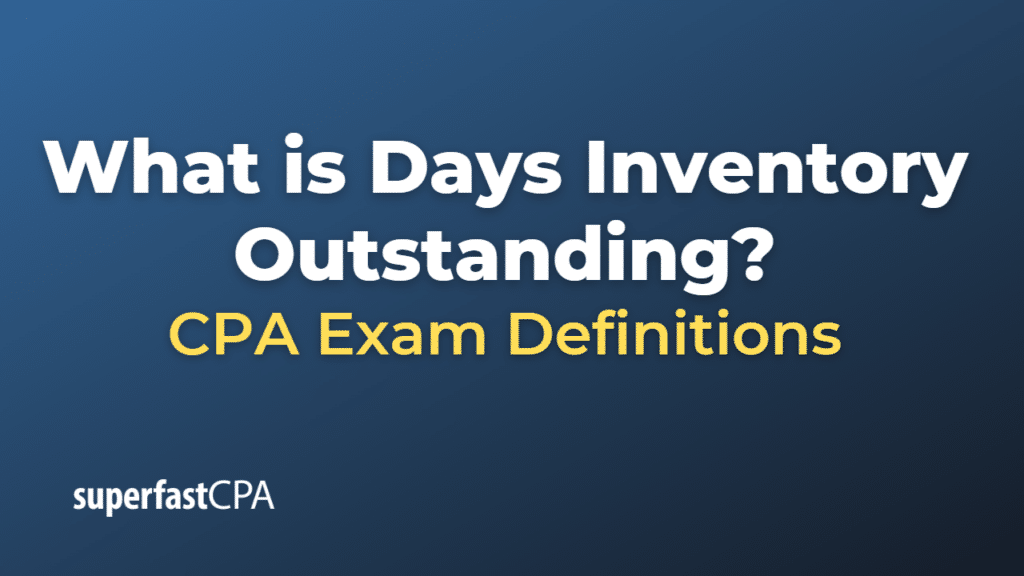Days Inventory Outstanding
Days Inventory Outstanding (DIO), also known as “days sales of inventory” (DSI) or “average inventory period”, is a financial ratio that measures the average number of days a company holds its inventory before selling it. This is an important metric for evaluating the efficiency of a company’s inventory management.
The formula for DIO is as follows:
\(\text{Days Inventory Outstanding} = \frac{\text{Average Inventory}}{\text{Cost of Goods Sold}} \times 365 \)
Where:
- “Average Inventory” is the average amount of inventory the company held during the time period. It can be calculated as (Beginning Inventory + Ending Inventory) / 2 if the inventory level has significantly fluctuated within the period.
- Cost of Goods Sold” (COGS) refers to the direct costs of producing the goods sold by a company. This includes the cost of the materials and labor directly used to create the good.
The resulting number tells you, on average, how many days it takes for a company to turn its inventory into sales.
A lower DIO generally indicates that a company takes less time to turn its inventory into sales, which can be a sign of operational efficiency and effective inventory management. However, a DIO that’s too low compared to industry standards might indicate that the company is risking stockouts and lost sales.
On the other hand, a higher DIO indicates that a company takes more time to sell its inventory, which could be a sign of overstocking or problems with the product (such as obsolescence or reduced demand). It also means more capital is tied up in inventory, which could be used elsewhere in the business.
As with all financial ratios, DIO should be used in comparison with industry norms and historical performance to provide meaningful insights.
Example of Days Inventory Outstanding
Let’s consider a hypothetical example of a company that manufactures electronic goods.
Suppose that for the current fiscal year, the company reported:
- Beginning inventory: $500,000
- Ending inventory: $600,000
- Cost of Goods Sold (COGS): $2,200,000
First, we need to calculate the average inventory for the year:
Average Inventory = (Beginning Inventory + Ending Inventory) / 2 Average Inventory = ($500,000 + $600,000) / 2 = $550,000
Now, we can calculate the Days Inventory Outstanding (DIO):
\(\text{DIO} = \frac{\text{Average Inventory}}{\text{COGS}} \times 365 \)
\(\text{DIO} = \frac{\$550,000}{\$2,200,000} \times 365 = \text{approximately 91.3 days} \)
This means that, on average, it takes the company about 91 days to turn its inventory into sales.
This figure on its own doesn’t tell us much. The company would need to compare this DIO with its own DIO from previous years, as well as with the DIOs of other companies in the electronics manufacturing industry, to get a better understanding of its inventory management efficiency.
For example, if the industry average DIO is 75 days, the company might be taking longer than its competitors to sell its inventory, which could indicate overstocking or issues with product demand. On the other hand, if the company’s DIO was 100 days the previous year, the current DIO of 91 days could indicate an improvement in inventory management.













